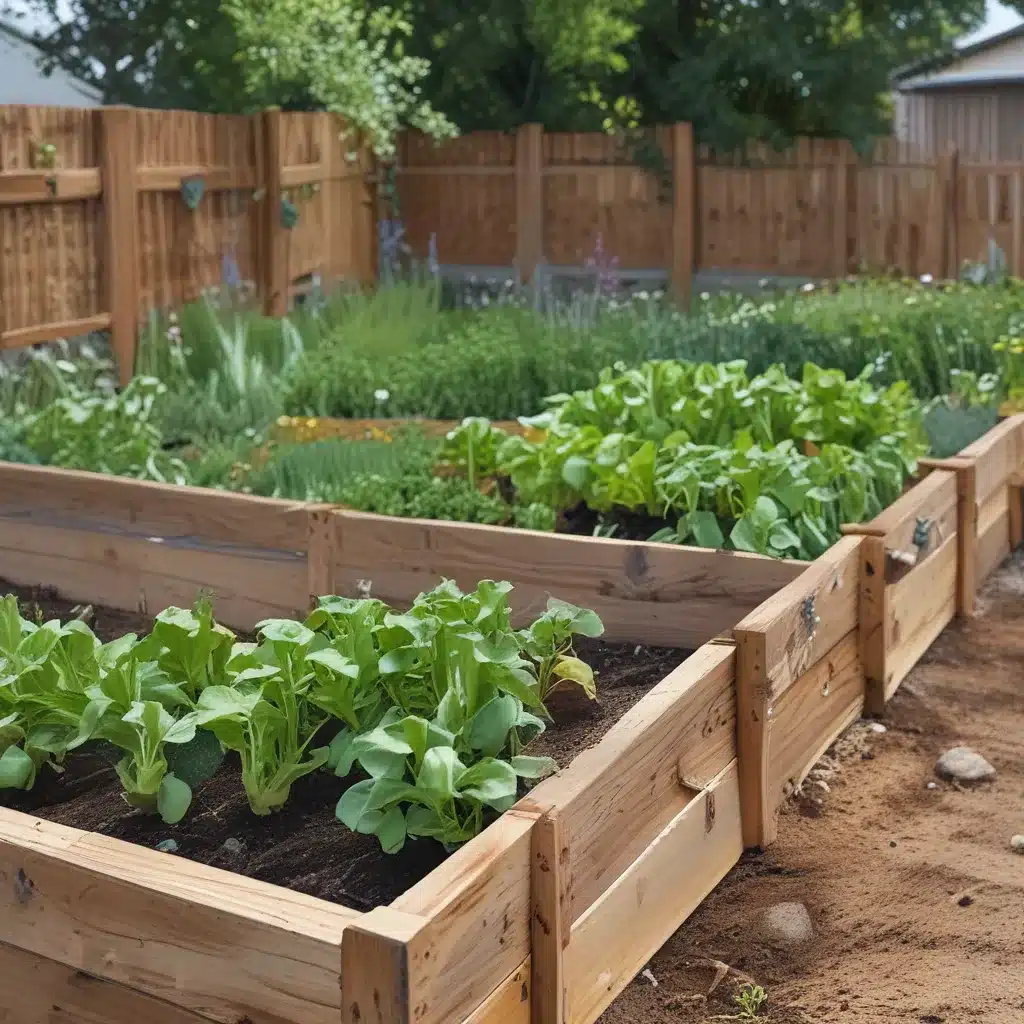
The Jujitsu of Vegetable Gardening
As a long-time member of the Thornapple Community Supported Agriculture (CSA) service, I’ve learned that successful vegetable gardening is a lot like the martial art of jujitsu. It requires being alert, adaptable, and quick on your feet, ready to tackle whatever Mother Nature throws your way.
Whether it’s an unexpected cold snap, a prolonged drought, or a deluge of rain, the resilient gardener must be prepared to pivot and find alternative paths to success. Just as a jujitsu practitioner uses an opponent’s force against them, we must learn to harness the power of changing conditions to our advantage.
Building Resilience into Raised Bed Systems
At the heart of my resilient gardening approach are the raised beds that form the backbone of my vegetable plot. These elevated growing areas aren’t just practical – they’re the foundation for an adaptable, high-yielding system that can weather any storm.
As I’ve learned from the insights on Sustainable Market Farming’s website, the key to building resilience into raised beds lies in keeping our options open. Rather than rigidly planning out every inch of the garden, I strive to maintain flexibility, waiting until the last possible moment to make decisions about crop varieties, cover cropping, and planting schedules.
This allows me to respond quickly to shifting conditions, making adjustments as needed to ensure a bountiful harvest, no matter what challenges arise. It’s all about being prepared, but also being willing to improvise when the unexpected happens.
Mastering the Art of Scenario Planning
One of the most essential tools in my resilient gardening toolkit is the practice of scenario planning. As described on the Sustainable Market Farming website, this approach involves visualizing different possible futures and developing flexible plans to navigate them.
For my raised bed systems, I might create a grid of scenarios based on factors like weather patterns, weed pressure, and planting timelines. This allows me to map out a range of options, from the best-case scenario to the most challenging, and have a ready-made playbook for how to respond.
For example, let’s say I’m planning my fall cover cropping. If I have a dry, early fall, I might sow oats that will winter-kill. But if the season is wet and I’m planting late, I may opt for winter rye, which can handle those conditions better. Or if the weeds are particularly troublesome, I might till in the cover crop and plant a sorghum-sudan hybrid mix instead.
By keeping multiple scenarios in mind and maintaining flexibility in my plans, I can pivot quickly when needed, drawing on a well-stocked toolbox of strategies to ensure my raised beds remain resilient and productive.
Cultivating Adaptability Through Record-Keeping
Of course, scenario planning is just one piece of the resilient gardening puzzle. As the Sustainable Market Farming website emphasizes, the other key is cultivating a deep understanding of our growing conditions and how our plants respond to them.
That’s why I’m meticulous about record-keeping, logging details on everything from soil temperatures and bloom times to crop yields and pest pressure. This data not only helps me make better decisions in the moment, but also informs my planning for future seasons.
For example, if I notice that my summer crops are struggling with extended heat waves, I can adapt by trialing more heat-tolerant varieties or adjusting my planting schedules. And if a particular cover crop isn’t performing as expected, I can refer back to my notes to figure out what went wrong and try a different approach next time.
This commitment to continuous learning is essential for the resilient gardener. By constantly observing, analyzing, and refining our practices, we can stay one step ahead of the challenges that come our way, always ready to put our jujitsu skills to the test.
Maximizing Yield and Minimizing Waste
Of course, all the scenario planning and record-keeping in the world won’t matter if we can’t actually get the crops out of the ground and into our kitchens. That’s why I’ve developed a range of strategies to maximize the productivity and efficiency of my raised bed systems.
As the Sustainable Market Farming website suggests, one key is maintaining a flexible, prioritized task list. During the growing season, I do a weekly tour of the gardens, reassessing my to-do list and shifting gears as needed. Harvesting always takes top priority, followed by planting, mulching, bed preparation, and weed management.
This adaptable approach ensures that even when the unexpected happens – whether it’s a family emergency or a sudden storm – I can still get the most important jobs done, keeping my raised beds humming along.
And if I do end up with a bumper crop that threatens to overwhelm me, I have a well-oiled plan for distributing the surplus. I’ll send out samples and recipes to our Thornapple CSA members, feature the item prominently on our website, or even donate the excess to a local food bank. That way, nothing goes to waste, and everyone gets to enjoy the bounty.
Building a Resilient, Adaptable Future
In the ever-changing world of vegetable gardening, resilience isn’t just a nice-to-have – it’s an essential survival skill. And as I’ve discovered, the key to building that resilience lies in the raised beds that form the backbone of my growing operation.
By maintaining flexibility, cultivating deep knowledge of my growing conditions, and developing a range of strategies to maximize productivity and minimize waste, I’ve created a system that can weather any storm. It’s the jujitsu of vegetable gardening, using the forces of nature against themselves to achieve a bountiful harvest, no matter what challenges arise.
So, whether you’re a seasoned CSA member or a budding backyard gardener, I encourage you to embrace the resilient raised bed approach. With a little bit of planning, a lot of adaptability, and a healthy dose of jujitsu-inspired ingenuity, you too can create a thriving, high-yield growing system that will carry you through the unpredictable seasons to come.



